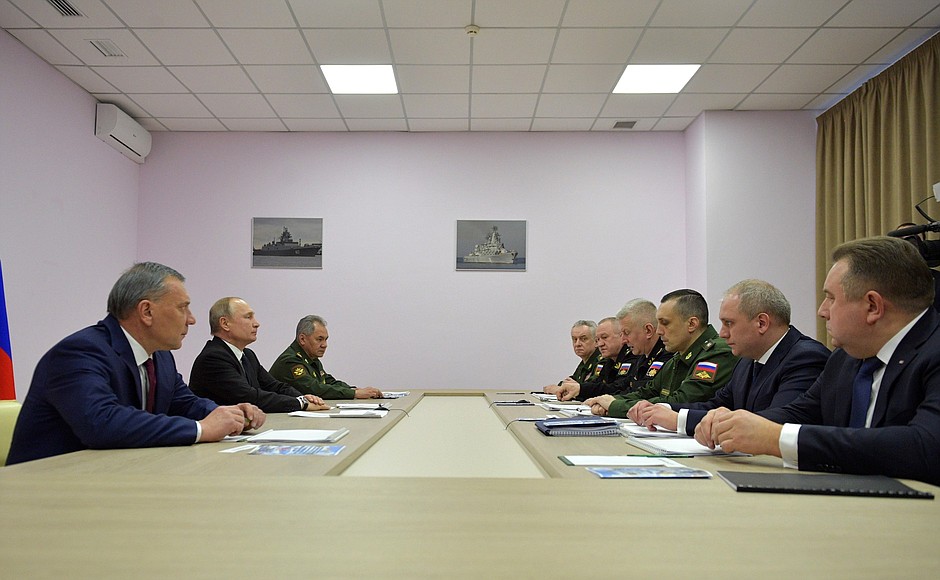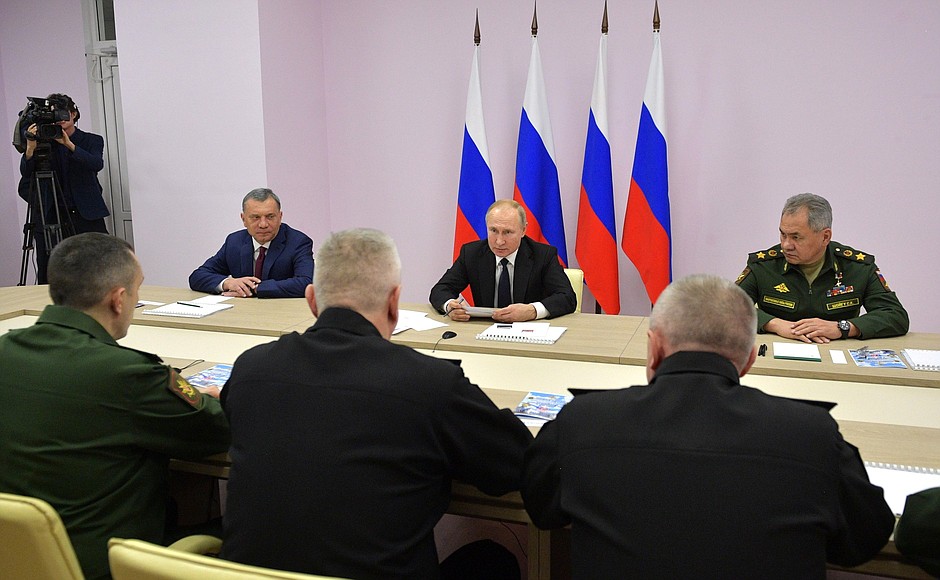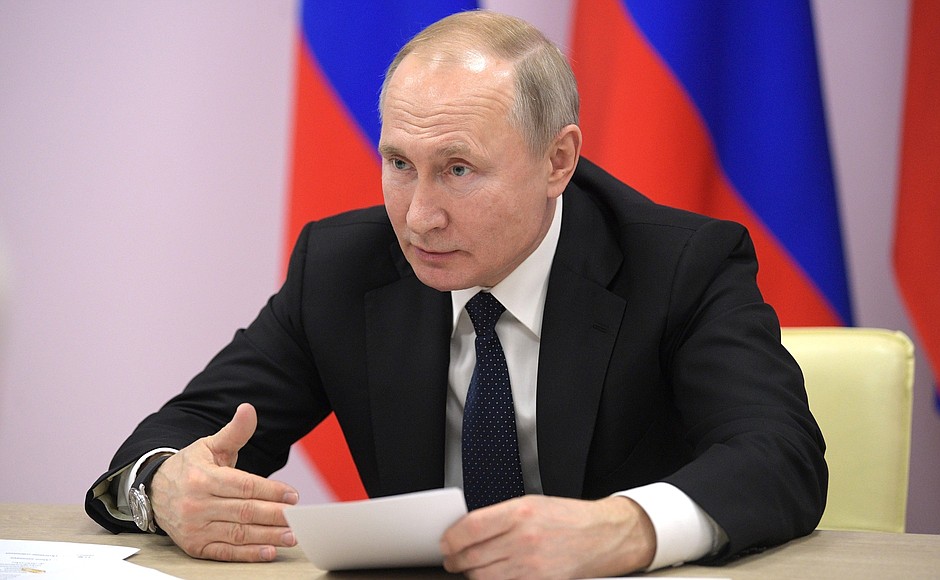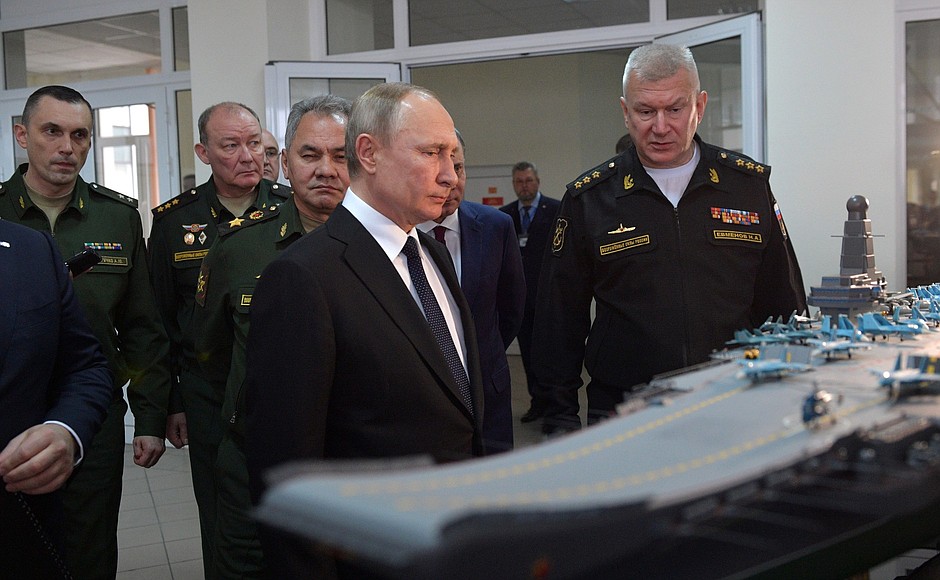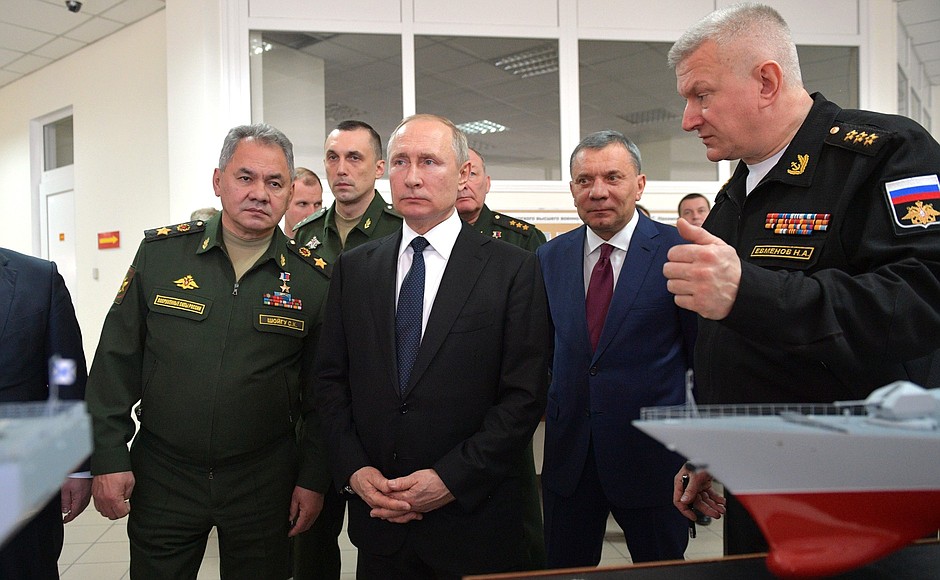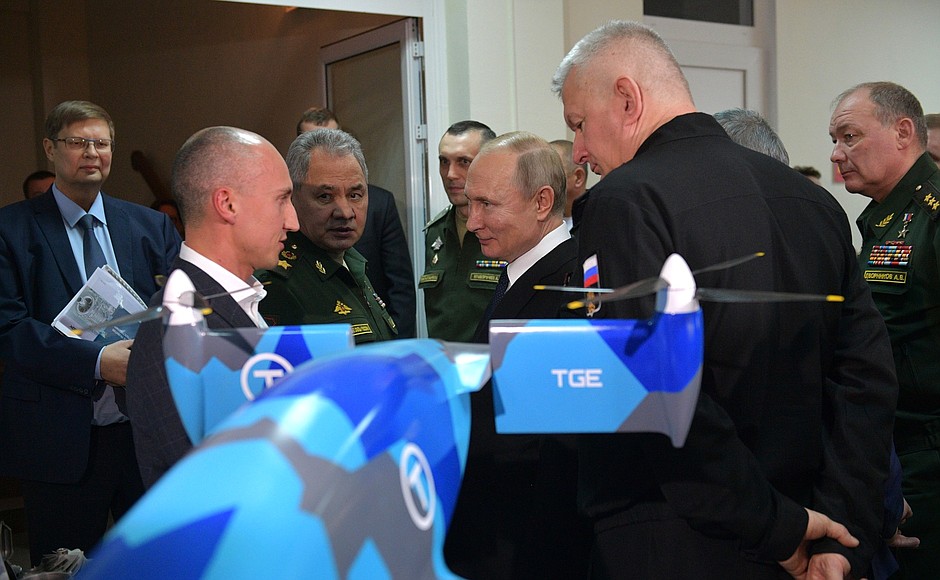Vladimir Putin held a meeting with the Defence Ministry leadership and the Russian Navy commanders to discuss the key areas of short- and long-term development of the Navy. The meeting was held while the Supreme Commander-in-Chief was visiting the Nakhimov Black Sea Naval Academy.
* * *
Beginning of meeting with Defence Ministry officials and Russian Navy commanders
President of Russia Vladimir Putin: Good afternoon, comrade officers,
Today we will discuss a very important subject. I know that a training conference on the development of the Russian Navy in the 21st century was held here.
However, I suggest that we start our meeting with something else. Today we started a new training year in the Armed Forces, which began with major military exercises in the Black Sea. The Navy held a major and, in my opinion, successful military exercise. I would like to ask the Commander-in-Chief of the Navy to briefly report on the results.
Commander-in-Chief of the Russian Navy Nikolai Yevmenov: Comrade Supreme Commander-in-Chief,
Today, we held an operative joint military exercise of the Navy and long-range air force, the first one this year. The exercise involved 31 warships, one submarine, 22 supply ships and 39 aircraft.
The military equipment has proved highly reliable and we have tested new ways and methods to use it. Our military personnel have demonstrated their professionalism. The objectives set for the exercise have been achieved and the results will be analysed and reported to you.
This concludes my report.
Vladimir Putin: Commander Yevmenov, I would like to thank you and, of course, the Defence Minister and the General Staff, and all those who prepared, organised and conducted this military exercise and our military personnel for their high performance at sea. Please convey my best wishes and gratitude to all.
Nikolai Yevmenov: Yes, Sir.
Vladimir Putin: Colleagues,
We must identify the main areas for short- and long-term development of the Russian Navy and discuss the problems in domestic shipbuilding.
The Navy has always been and remains an important, if not a key, component of ensuring national defence and security. In the 21st century, we must also preserve and enhance our country’s status as one of the world’s leading seafaring nations.
I would like to note that in recent years we have given greater attention to the development of the Navy and have allocated considerable resources and funds for this purpose. We will continue to work to ensure that we have modern, most advanced Navy.
We have considered in detail the issues of upgrading the Navy at a series of meetings in Sochi in early December last year. We discussed, among other things, efforts to enhance our sea-based strategic nuclear forces.
As you know, in the near future, modern weapons and equipment will account for 70 percent of all weapons in the Navy. I would like to reiterate that we will need to not only achieve this result – we will have to maintain it.
It is important to remember that in the past ten years the quality of and approaches to designing and building ships around the world have changed significantly.
Today, reducing construction times and cutting costs for naval equipment is possible only if advanced technology and processes, including 3D modelling and modular method of shipbuilding, are used throughout the entire construction cycle and also if the weapons and the basic equipment are unified and up-to-date shipbuilding capacity is available.
I would like to repeat that we can only achieve the above if we increase the series production of ships and reduce the period of time required for commissioning ships to the Navy and improve maintenance and repairs service. So, it is important that now the performance specifications of future naval vessels include requirements regarding the development and acceptance of electronic design documents based on a ship’s digital model.
Of course, a very important issue is – and we have also repeatedly spoken about this, including at our meetings in Sochi, – that a unification of the Navy weapons and equipment is carried out. Even today, as we reviewed prospective vessels and what we have at the moment, what needs to be upgraded, – everyone came back to this: the Minister, the Commander-in-Chief and our other colleagues.
Currently, we are close to completing the development of complex targeted programmes for developing naval weapon systems according to a single standard based on cross-branch unification with a gradual conversion to modular architecture. So, at our today’s meeting, I would like to hear what progress has been made on this.
Let’s begin.
<…>
